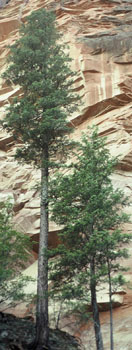
Witch Hazel is the common name for a family (Hamamelidaceae) of trees or shrubs and refers especially to members of the genus Hamamelis. Four species of Hamamelis are found in East Asia, 2 are native to North America. Witch hazel or snapping hazel (H. virginiana), a fall flowering shrub, is native to Canada, growing in woods in Québec, NS, NB and Ontario. The plant grows to 5 m, and flowers are bright yellow with 4 long thin petals. Spring-flowering Chinese witch hazel (H. mollis), introduced from China in the 1890s, is a popular ornamental in milder regions of Canada.
Witch hazel may be called "hazel" because the leaf shape resembles that of true hazels (genus Corylus of the birch family). "Witch" may come from the use of Hamamelis branches for divining rods, although true hazels, not Hamamelis plants, were traditionally associated with witches.
Medicinal Uses
A leaf and bark extract of H. virginiana was a common remedy among Indigenous peoples and was introduced to Europe in 1736. It was used for soothing inflammations and bruises, and for treating hemorrhoids, congestions and tumours; its astringent and soothing properties are still appreciated for external application.

 Share on Facebook
Share on Facebook Share on X
Share on X Share by Email
Share by Email Share on Google Classroom
Share on Google Classroom


